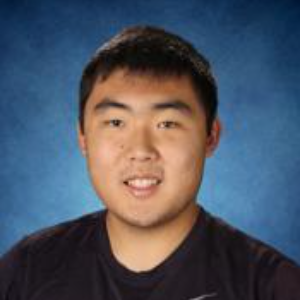Title : Center of pressure oscillations reveal the potential factors of loss of automaticity in older adults
Abstract:
Falls are a significant global health issue for older adults. Most falls among older adults occur during dual-task activities. This could be attributed to the reduced automaticity in postural control among older adults. Identifying potential factors contributing to the loss of automaticity is crucial for future rehabilitation interventions aimed at improving postural control in this population. Power spectral analysis of the center of pressure (CoP) is believed to reflect the significance and contribution of sensory systems to the execution of postural control. Therefore, this study aimed to examine CoP oscillations and prefrontal cortex (PFC) activation under dual-task standing in both young and older adults.
Methods: Fourteen healthy older adults (the experimental group; age: 67.21±3.38 years; height: 162.00±8.79 cm; and mass: 63.67±10.70 kg) and another fourteen gender-matched young adults (the control group; age: 19.80±0.75 years; height: 168.20±8.82 cm; and mass: 57.35±3.52 kg) participated in this study. Participants completed single-task (Standing) and dual-task (Standing and Counting) trials in a fixed order. In the duel-task trials, participants were given a randomly generated 3-digit number, then asked to subtract down by 7’s as the secondary task. The displacement of CoP was recorded using a Kistler Force plate in both the arterial-posterior (AP) and medial-lateral (ML) directions. The PFC activation in both the left and right hemispheres was measured using a functional near-infrared spectroscopy (fNIRS) system. The dependent variables included CoP oscillations at the frequency range of 0-0.1, 0.1-0.5, and 0.5-1.0 Hz in both the AP and ML directions, along with right/left PFC activations. Three two-way mixed model ANOVAs were conducted to examine the effects of group and task on CoP oscillations and PFC activation.
Results: There was a significant group × task interaction (F6, 21 = 3.258, p = 0.020) in CoP oscillations. Also, the main effects of group (F6, 21 = 2.823, p = 0.036 & F2, 25 = 5.893, p = 0.008) and task (F6, 21 = 4.903, p = 0.003 & F2, 25 = 3.414, p = 0.049) were statistically significant for both CoP oscillations and PFC activation. The older adults group showed greater CoP oscillations of 0.5-1.0 Hz (19.58±10.62 vs. 12.03±5.65 cm2, p = 0.027) in the AP direction and increased Cop oscillations of 0-0.1 Hz (23.20±12.54 vs. 9.88±6.94 cm2, p = 0.002), 0.1-0.5 Hz (30.00±23.12 vs. 11.14±7.05 cm2, p = 0.007), and 0.5-1 Hz (14.50 vs. 9.28±3.97 cm2, p = 0.019) in the ML direction during dual-task trials when compared to the younger group. In addition, the older adult group presented greater brain activation in the left PFC (0.015±0.028 vs. -0.0089±0.037 mmol/L, p = 0.015) than the younger group across both tasks.
Conclusion: Older adults presented increased CoP oscillations and PFC activation when compared to younger adults in response to a secondary task. This suggests a greater reliance on the sensory systems due to the loss of automaticity in postural control.
Audience Take Away
- Older adults are more reliant on sensory information to compensate for their postural control under dual-task standing, which is one of the potential factors for loss of automaticity in postural control with aging
- By targeting the sensory systems through specific exercises and activities, rehabilitation interventions may be able to improve postural control in older adults and reduce the risk of falls
- Utilizing neuroimaging and biomechanical measures in tandem to assess the possible risk of preclinical Alzheimer’s disease and early-stage Parkinson’s disease in older adults




